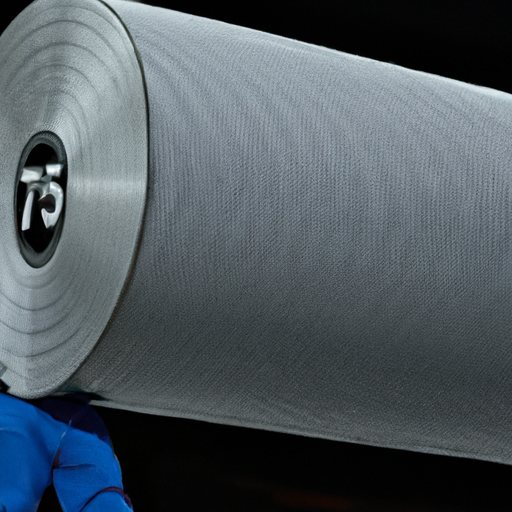
The latest Coil, the Coil Voltic, is a high-performance electric sports car that has been generating a lot of buzz in the automotive world. With its sleek design, cutting-edge technology, and impressive performance capabilities, the Coil Voltic is a car that is sure to turn heads wherever it goes.The purchase price of the latest Coil Voltic varies depending on the specific model and features that are chosen. The base model of the Coil Voltic starts at around $150,000, but this price can increase significantly with the addition of optional features and upgrades. For example, a fully loaded Coil Voltic with all the bells and whistles could cost upwards of $200,000 or more.Despite its high price tag, the Coil Voltic offers a lot of value for the money. With its all-electric powertrain, the Coil Voltic is not only environmentally friendly but also incredibly efficient. The car can go from 0 to 60 mph in just a few seconds, making it one of the fastest electric cars on the market. In addition, the Coil Voltic has a top speed of over 200 mph, making it a true performance powerhouse.One of the standout features of the Coil Voltic is its advanced technology. The car comes equipped with a state-of-the-art infotainment system that includes a large touchscreen display, navigation system, and smartphone integration. In addition, the Coil Voltic also offers a range of driver assistance features, such as adaptive cruise control, lane-keeping assist, and automatic emergency braking.In terms of design, the Coil Voltic is a real head-turner. With its sleek, aerodynamic body and futuristic styling, the car looks like something straight out of a sci-fi movie. The interior of the Coil Voltic is equally impressive, with high-quality materials and a modern, minimalist design that exudes luxury and sophistication.Overall, the latest Coil Voltic is a car that offers a winning combination of performance, technology, and style. While its high price tag may put it out of reach for some buyers, those who can afford it will be rewarded with a truly exceptional driving experience. Whether you're a car enthusiast looking for a high-performance sports car or an eco-conscious consumer in search of a greener alternative, the Coil Voltic is a car that is sure to impress.
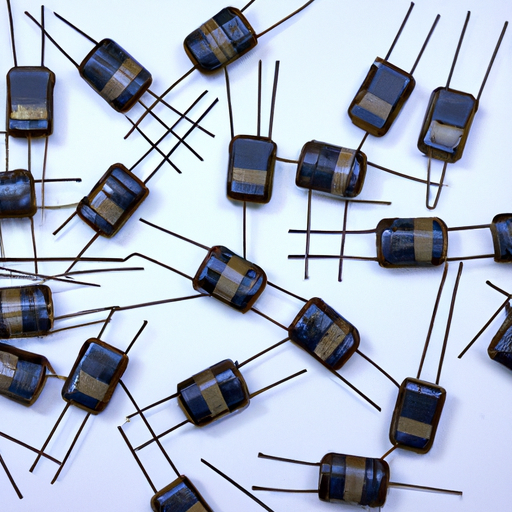
Inductors are passive electronic components that play a crucial role in a wide range of practical applications. They are commonly used in electronic circuits to store and release energy in the form of a magnetic field. Inductors are made up of a coil of wire wound around a core material, such as iron or ferrite. When an electric current flows through the coil, a magnetic field is generated, which in turn induces a voltage in the coil.Inductors have a number of important properties that make them useful in practical applications. One of the key properties of inductors is their ability to resist changes in current flow. This property is known as inductance, and it is measured in henries. Inductors with higher inductance values are able to store more energy in the form of a magnetic field, and are therefore able to resist changes in current flow more effectively.Inductors are commonly used in electronic circuits to filter out unwanted signals or noise. For example, inductors can be used in conjunction with capacitors to create a low-pass filter, which allows low-frequency signals to pass through while blocking high-frequency signals. This can be useful in applications such as audio amplifiers, where it is important to filter out noise and interference.Inductors are also used in power supply circuits to store energy and smooth out fluctuations in voltage. For example, inductors can be used in conjunction with capacitors to create a voltage regulator circuit, which ensures that the output voltage remains stable even when the input voltage fluctuates. This can be important in applications such as computer power supplies, where a stable voltage is essential for proper operation.Inductors are also used in radio frequency (RF) circuits to tune and filter signals. For example, inductors can be used in conjunction with capacitors to create a resonant circuit, which can be tuned to a specific frequency. This can be useful in applications such as radio receivers, where it is important to select and amplify a specific frequency from a range of incoming signals.In addition to these practical applications, inductors are also used in a wide range of other applications, including inductors are also used in electric motors, transformers, and inductive sensors. Inductors are also used in wireless charging systems, where they are used to transfer power wirelessly from a transmitter to a receiver.Overall, inductors play a crucial role in a wide range of practical applications. Their ability to store and release energy in the form of a magnetic field makes them essential components in electronic circuits, power supplies, and RF circuits. Without inductors, many of the electronic devices and systems that we rely on every day would not be able to function properly.
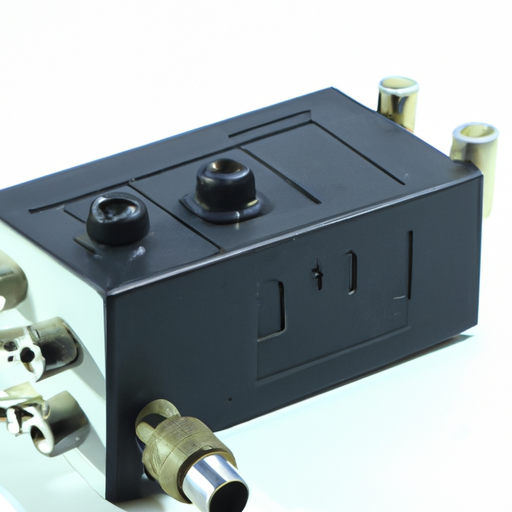
The signal converter industry is constantly evolving to meet the demands of modern technology and the increasing need for efficient and accurate signal processing. As technology advances, so do the trends in the signal converter industry. In this article, we will explore some of the key trends shaping the industry today.1. Digitalization: One of the most significant trends in the signal converter industry is the shift towards digitalization. Digital signal converters are becoming increasingly popular due to their ability to provide more accurate and reliable signal processing. Digital converters offer higher resolution, faster processing speeds, and improved signal-to-noise ratios compared to their analog counterparts. As a result, many companies are investing in digital signal converters to improve the performance of their systems.2. Integration of advanced technologies: Another trend in the signal converter industry is the integration of advanced technologies such as artificial intelligence (AI) and machine learning. These technologies are being used to enhance the performance of signal converters by optimizing signal processing algorithms and improving overall system efficiency. AI-powered signal converters can adapt to changing signal conditions in real-time, making them ideal for applications where signal quality is critical.3. Miniaturization: With the increasing demand for smaller and more portable devices, miniaturization is a key trend in the signal converter industry. Manufacturers are developing compact signal converters that can be easily integrated into smaller devices without compromising performance. Miniaturized signal converters are ideal for applications where space is limited, such as wearable devices, IoT sensors, and mobile devices.4. Increased connectivity: Connectivity is another important trend in the signal converter industry. Signal converters are now being designed to support a wide range of communication protocols, including Ethernet, USB, Bluetooth, and Wi-Fi. This allows for seamless integration with other devices and systems, enabling data sharing and remote monitoring capabilities. Increased connectivity also enables the use of cloud-based services for data storage and analysis, further enhancing the capabilities of signal converters.5. Energy efficiency: As energy consumption becomes a growing concern, energy efficiency is a key trend in the signal converter industry. Manufacturers are developing energy-efficient signal converters that consume less power without compromising performance. Energy-efficient converters help reduce operating costs and environmental impact, making them an attractive option for companies looking to improve sustainability.6. Customization and flexibility: With the increasing diversity of applications and requirements, customization and flexibility are becoming important trends in the signal converter industry. Manufacturers are offering customizable signal converters that can be tailored to specific application needs, such as signal type, input/output range, and communication protocol. Flexible signal converters allow for easy integration into existing systems and can adapt to changing requirements over time.In conclusion, the signal converter industry is experiencing rapid growth and innovation driven by advancements in technology and changing market demands. Digitalization, integration of advanced technologies, miniaturization, increased connectivity, energy efficiency, and customization are some of the key trends shaping the industry today. Companies that embrace these trends and invest in cutting-edge signal converter technologies will be well-positioned to meet the evolving needs of the market and drive future growth and success.
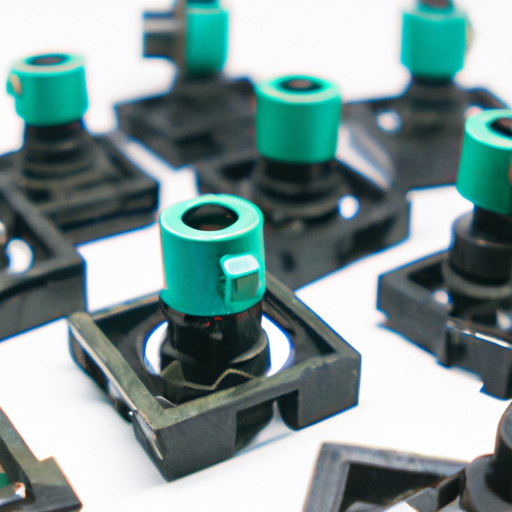
Signal converters are essential components in various electronic devices and systems, as they are responsible for converting one type of signal into another. This conversion process is crucial for ensuring compatibility between different devices and enabling seamless communication between them. In recent years, there have been significant advancements in signal converter manufacturing processes, leading to the development of more efficient, reliable, and versatile converters. In this article, we will explore some of the latest manufacturing processes used in signal converter production and their impact on the industry.One of the key trends in signal converter manufacturing is the use of advanced materials and technologies to improve performance and reliability. For example, manufacturers are increasingly using high-quality components such as precision resistors, capacitors, and integrated circuits to ensure accurate signal conversion and minimize signal distortion. In addition, the use of advanced manufacturing techniques such as surface-mount technology (SMT) and automated assembly processes has enabled faster production speeds and higher product consistency.Another important development in signal converter manufacturing is the integration of digital signal processing (DSP) technology into converter designs. DSP technology allows for more precise signal processing and control, leading to improved signal quality and faster response times. By incorporating DSP technology into signal converters, manufacturers can offer more advanced features and functionalities, such as signal filtering, amplification, and modulation, in a compact and cost-effective package.Furthermore, the trend towards miniaturization and integration in signal converter manufacturing has led to the development of smaller and more compact converters with higher performance capabilities. Manufacturers are now able to pack more functionality into smaller form factors, making signal converters suitable for a wider range of applications, including portable devices, wearable electronics, and IoT (Internet of Things) devices. This trend towards miniaturization has been made possible by advancements in semiconductor technology, allowing for the integration of multiple functions onto a single chip.In addition to advancements in materials, technologies, and miniaturization, manufacturers are also focusing on improving the efficiency and sustainability of signal converter manufacturing processes. For example, many companies are implementing lean manufacturing principles and energy-efficient production techniques to reduce waste, minimize environmental impact, and lower production costs. By optimizing production processes and reducing energy consumption, manufacturers can improve their competitiveness in the market while also contributing to a more sustainable future.Overall, the latest signal converter manufacturing processes are characterized by a focus on performance, reliability, miniaturization, integration, efficiency, and sustainability. By leveraging advanced materials, technologies, and manufacturing techniques, manufacturers are able to produce high-quality converters that meet the demands of modern electronic devices and systems. As the demand for signal converters continues to grow in industries such as telecommunications, automotive, industrial automation, and consumer electronics, manufacturers will continue to innovate and improve their production processes to stay ahead of the competition and meet the evolving needs of customers.
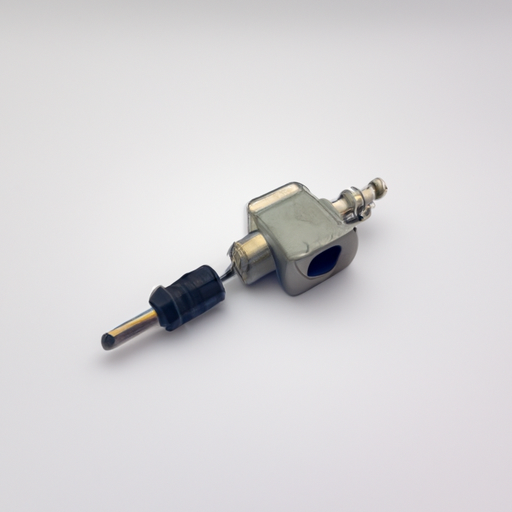
Product standards for adjustable sensors are essential to ensure that they meet the necessary requirements for quality, safety, and performance. These standards help manufacturers produce reliable and consistent products that meet the needs of consumers and comply with regulations. In this article, we will discuss the product standards for adjustable sensors and why they are important.Adjustable sensors are devices that can be calibrated or modified to detect and measure various parameters such as temperature, pressure, light, or motion. These sensors are used in a wide range of applications, including industrial automation, automotive systems, consumer electronics, and medical devices. To ensure that adjustable sensors perform accurately and reliably, they must meet certain product standards.One of the most important product standards for adjustable sensors is accuracy. Sensors must be able to provide precise and reliable measurements within a specified range. This is crucial for applications where even small errors can have significant consequences, such as in medical devices or industrial control systems. Product standards typically define the acceptable level of accuracy for a sensor and specify testing methods to verify compliance.Another key product standard for adjustable sensors is reliability. Sensors must be able to operate consistently over time and under various environmental conditions. This includes factors such as temperature, humidity, vibration, and electromagnetic interference. Product standards often include requirements for durability, stability, and resistance to external influences to ensure that sensors can perform reliably in real-world applications.In addition to accuracy and reliability, product standards for adjustable sensors also cover aspects such as sensitivity, response time, and resolution. Sensitivity refers to the ability of a sensor to detect small changes in the measured parameter, while response time is the time it takes for a sensor to react to a change. Resolution is the smallest increment that a sensor can detect or measure. These parameters are important for determining the performance capabilities of a sensor and are typically specified in product standards.Product standards for adjustable sensors also address safety and regulatory compliance. Sensors used in certain applications, such as medical devices or automotive systems, may be subject to specific safety requirements to protect users and ensure proper functioning. Product standards may include guidelines for electrical safety, electromagnetic compatibility, and environmental regulations to ensure that sensors meet the necessary legal and safety requirements.In addition to technical specifications, product standards for adjustable sensors may also cover aspects such as packaging, labeling, and documentation. Proper packaging is important to protect sensors during shipping and storage, while clear labeling helps users identify the type and specifications of a sensor. Documentation requirements may include user manuals, calibration procedures, and compliance certificates to ensure that users can properly install and use the sensor.Overall, product standards for adjustable sensors play a crucial role in ensuring the quality, performance, and safety of these devices. By adhering to these standards, manufacturers can produce reliable and consistent products that meet the needs of consumers and comply with regulations. Users can have confidence in the accuracy and reliability of adjustable sensors, knowing that they have been tested and certified to meet the necessary product standards.
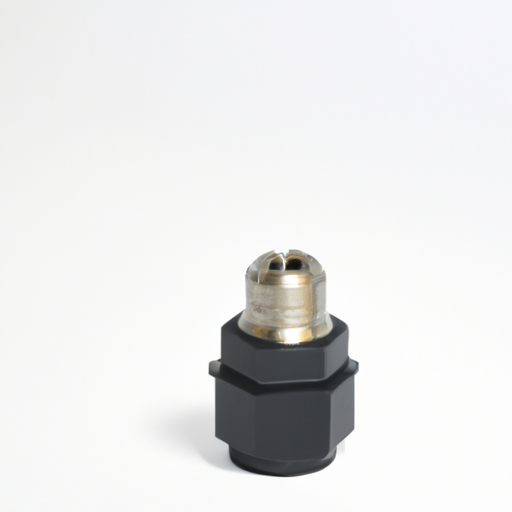
Adjustable sensors are a crucial component in many industries, allowing for precise measurement and control of various parameters. These sensors can be adjusted to suit specific requirements, making them versatile and adaptable to a wide range of applications. In this article, we will explore some of the popular adjustable sensor product types and their uses in different industries.1. Pressure Sensors:
Pressure sensors are used to measure the pressure of gases or liquids in a system. These sensors are essential in industries such as automotive, aerospace, and manufacturing, where precise pressure control is necessary for optimal performance. Adjustable pressure sensors can be calibrated to measure different pressure ranges, making them suitable for a variety of applications.2. Temperature Sensors:
Temperature sensors are used to measure the temperature of a system or environment. These sensors are crucial in industries such as HVAC, food processing, and pharmaceuticals, where temperature control is essential for product quality and safety. Adjustable temperature sensors can be calibrated to measure temperatures within a specific range, allowing for precise monitoring and control.3. Level Sensors:
Level sensors are used to measure the level of liquids or solids in a container or tank. These sensors are commonly used in industries such as wastewater treatment, oil and gas, and chemical processing, where accurate level measurement is critical for process efficiency and safety. Adjustable level sensors can be customized to suit different tank sizes and materials, making them versatile and adaptable to various applications.4. Flow Sensors:
Flow sensors are used to measure the flow rate of liquids or gases in a system. These sensors are essential in industries such as water treatment, oil and gas, and pharmaceuticals, where accurate flow measurement is necessary for process optimization and control. Adjustable flow sensors can be calibrated to measure different flow rates, making them suitable for a wide range of applications.5. Proximity Sensors:
Proximity sensors are used to detect the presence or absence of an object within a certain distance. These sensors are commonly used in industries such as automotive, robotics, and packaging, where object detection is essential for automation and safety. Adjustable proximity sensors can be customized to detect objects at different distances, making them versatile and adaptable to various applications.6. Motion Sensors:
Motion sensors are used to detect movement or changes in position. These sensors are crucial in industries such as security, healthcare, and gaming, where motion detection is essential for monitoring and control. Adjustable motion sensors can be calibrated to detect different types of motion, making them suitable for a wide range of applications.7. Light Sensors:
Light sensors are used to measure the intensity of light in a system or environment. These sensors are commonly used in industries such as agriculture, automotive, and consumer electronics, where light intensity control is necessary for optimal performance. Adjustable light sensors can be calibrated to measure different light levels, making them versatile and adaptable to various applications.In conclusion, adjustable sensors are essential components in many industries, allowing for precise measurement and control of various parameters. Pressure sensors, temperature sensors, level sensors, flow sensors, proximity sensors, motion sensors, and light sensors are some of the popular adjustable sensor product types used in different industries. These sensors can be customized and calibrated to suit specific requirements, making them versatile and adaptable to a wide range of applications. Whether it's monitoring pressure in a manufacturing plant or detecting motion in a security system, adjustable sensors play a crucial role in ensuring efficiency, safety, and quality in various industries.
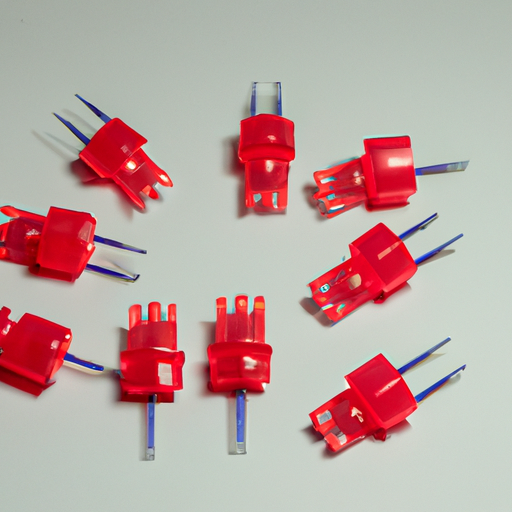
The market size of fixed electrical sensors is a crucial factor in understanding the growth and potential of this industry. Fixed electrical sensors are devices that are used to detect changes in electrical signals and convert them into usable data for various applications. These sensors are widely used in industries such as automotive, healthcare, manufacturing, and consumer electronics.According to a report by Grand View Research, the global fixed electrical sensor market size was valued at $2.8 billion in 2020 and is expected to reach $4.2 billion by 2027, growing at a CAGR of 6.2% during the forecast period. This growth can be attributed to the increasing demand for automation and smart technologies in various industries, as well as the rising adoption of IoT devices and sensors.One of the key drivers of the fixed electrical sensor market is the growing need for real-time data monitoring and analysis in industries such as manufacturing and healthcare. Fixed electrical sensors play a crucial role in monitoring equipment performance, detecting faults, and ensuring smooth operations. In the healthcare sector, these sensors are used for monitoring patient vital signs, tracking medication adherence, and detecting anomalies in medical equipment.Another factor driving the growth of the fixed electrical sensor market is the increasing adoption of smart technologies and IoT devices. Fixed electrical sensors are an integral part of IoT systems, enabling the collection and transmission of data for analysis and decision-making. These sensors are used in smart homes, smart cities, and industrial IoT applications to monitor environmental conditions, track assets, and optimize energy usage.The automotive industry is also a major contributor to the growth of the fixed electrical sensor market. With the increasing demand for electric vehicles and autonomous driving technologies, the need for sensors that can detect changes in electrical signals is on the rise. Fixed electrical sensors are used in electric vehicles for battery monitoring, motor control, and safety systems, while in autonomous vehicles, these sensors play a crucial role in detecting obstacles and ensuring safe navigation.In terms of regional market size, North America is expected to dominate the fixed electrical sensor market, followed by Europe and Asia Pacific. The presence of key players in the region, such as Honeywell International Inc., TE Connectivity Ltd., and Siemens AG, is driving the growth of the market in North America. In Europe, the increasing adoption of smart technologies and stringent regulations related to safety and emissions are fueling the demand for fixed electrical sensors. In Asia Pacific, the rapid industrialization and growing automotive sector are driving the growth of the market.Overall, the market size of fixed electrical sensors is expected to witness significant growth in the coming years, driven by the increasing demand for automation, smart technologies, and IoT devices across various industries. With advancements in sensor technology and the integration of AI and machine learning algorithms, fixed electrical sensors are expected to play a crucial role in enabling data-driven decision-making and improving operational efficiency.
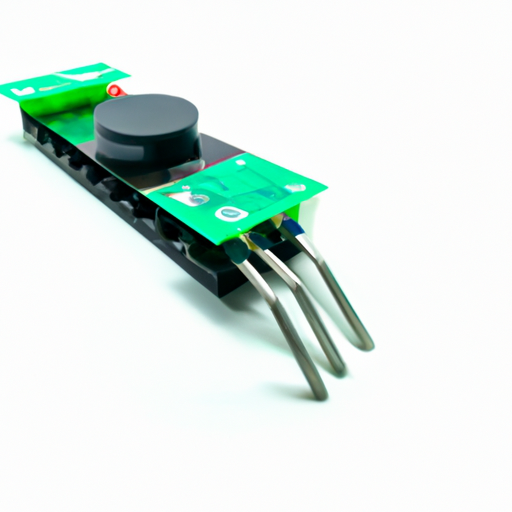
Fixed electrical sensors are an essential component in various industries, including manufacturing, automotive, aerospace, and healthcare. These sensors play a crucial role in detecting and measuring various parameters such as temperature, pressure, proximity, and motion. To ensure the reliability and accuracy of fixed electrical sensors, it is essential to adhere to specific product standards. In this article, we will discuss the product standards for fixed electrical sensors and why they are important.Product standards for fixed electrical sensors are established to ensure that the sensors meet certain criteria in terms of performance, safety, and quality. These standards are developed by organizations such as the International Electrotechnical Commission (IEC), the American National Standards Institute (ANSI), and the International Organization for Standardization (ISO). Adhering to these standards helps manufacturers produce high-quality sensors that are reliable, safe, and compatible with other systems.One of the most important product standards for fixed electrical sensors is accuracy. Sensors must be able to measure the desired parameter with a high degree of precision to ensure the reliability of the data they provide. The accuracy of a sensor is typically expressed as a percentage of the full-scale reading, and manufacturers must ensure that their sensors meet the specified accuracy requirements.Another critical product standard for fixed electrical sensors is reliability. Sensors must be able to operate consistently and predictably over an extended period without failure. This is especially important in applications where sensor failure could lead to safety hazards or costly downtime. Manufacturers must conduct rigorous testing to ensure that their sensors meet reliability standards and can withstand harsh operating conditions.In addition to accuracy and reliability, fixed electrical sensors must also meet safety standards. Sensors that are used in hazardous environments, such as those with explosive gases or flammable liquids, must comply with specific safety regulations to prevent accidents and ensure the well-being of workers. Safety standards for sensors may include requirements for explosion-proof enclosures, intrinsically safe designs, and protection against electrical hazards.Quality is another essential product standard for fixed electrical sensors. Manufacturers must adhere to strict quality control processes to ensure that their sensors meet the highest standards of workmanship and performance. This includes using high-quality materials, conducting thorough testing, and implementing robust quality assurance procedures. By meeting quality standards, manufacturers can ensure that their sensors are durable, reliable, and long-lasting.Compatibility is also a crucial product standard for fixed electrical sensors. Sensors must be designed to work seamlessly with other components and systems, such as controllers, data acquisition systems, and communication networks. Manufacturers must ensure that their sensors meet compatibility standards to facilitate easy integration and interoperability with existing infrastructure.In conclusion, product standards for fixed electrical sensors are essential for ensuring the performance, safety, and quality of these critical components. By adhering to accuracy, reliability, safety, quality, and compatibility standards, manufacturers can produce sensors that meet the needs of various industries and applications. Compliance with product standards not only benefits manufacturers by ensuring the quality of their products but also benefits end-users by providing them with reliable and safe sensors for their applications. Adherence to product standards is crucial for the continued advancement and innovation of fixed electrical sensors in the modern industrial landscape.
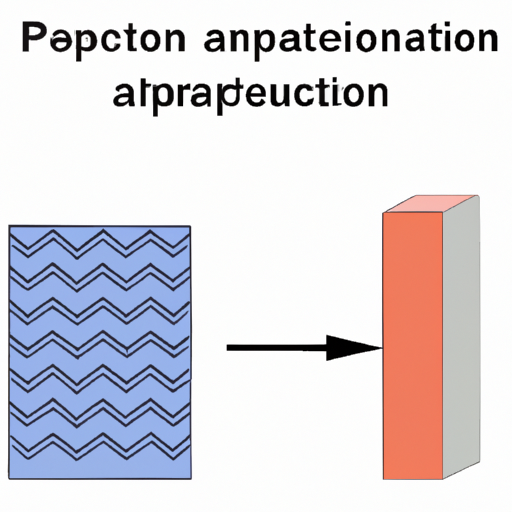
Polymer capacitors, also known as organic semiconductor capacitors, are a type of capacitor that has gained popularity in recent years due to their high capacitance, low ESR (Equivalent Series Resistance), and long lifespan. These capacitors are widely used in various electronic devices and applications, including power supplies, audio equipment, and automotive electronics. In this article, we will explore the main application directions of polymer capacitors and discuss their advantages and disadvantages compared to other types of capacitors.One of the main application directions of polymer capacitors is in power supplies. Polymer capacitors are known for their high capacitance values, which make them ideal for filtering and smoothing out voltage fluctuations in power supplies. They are commonly used in DC-DC converters, voltage regulators, and other power management circuits to improve the stability and efficiency of the power supply. Polymer capacitors are also used in energy storage applications, such as in renewable energy systems and electric vehicles, where they help to store and release energy efficiently.Another important application direction of polymer capacitors is in audio equipment. Polymer capacitors are preferred in audio circuits due to their low ESR and high capacitance values, which help to reduce noise and distortion in audio signals. They are commonly used in audio amplifiers, speakers, and other audio devices to improve the sound quality and performance. Polymer capacitors are also used in high-end audio equipment, such as studio monitors and professional audio systems, where high-quality components are essential for achieving the best sound reproduction.Polymer capacitors are also widely used in automotive electronics, where they help to improve the performance and reliability of various electronic systems in vehicles. They are used in engine control units, airbag systems, infotainment systems, and other automotive electronics to provide stable and reliable power supply. Polymer capacitors are preferred in automotive applications due to their high temperature tolerance, long lifespan, and low ESR, which make them suitable for the harsh operating conditions in vehicles.In addition to power supplies, audio equipment, and automotive electronics, polymer capacitors are also used in a wide range of other applications, including consumer electronics, telecommunications, industrial equipment, and medical devices. They are used in LED lighting, smartphones, routers, industrial control systems, and medical imaging equipment, among others. Polymer capacitors are preferred in these applications due to their high capacitance values, low ESR, and long lifespan, which make them suitable for a wide range of electronic devices and systems.One of the key advantages of polymer capacitors is their high capacitance values, which allow them to store more energy compared to other types of capacitors. This makes them ideal for applications that require high energy storage capacity, such as power supplies and energy storage systems. Polymer capacitors also have low ESR, which helps to reduce power losses and improve the efficiency of electronic circuits. In addition, polymer capacitors have a long lifespan, which makes them a reliable and durable choice for electronic devices and systems.Despite their many advantages, polymer capacitors also have some limitations that should be considered when selecting them for a specific application. One of the main limitations of polymer capacitors is their relatively high cost compared to other types of capacitors, such as electrolytic capacitors. This can be a significant factor for cost-sensitive applications, where the overall cost of the electronic system needs to be minimized. In addition, polymer capacitors have a lower voltage rating compared to other types of capacitors, which may limit their use in high-voltage applications.In conclusion, polymer capacitors are a versatile and reliable choice for a wide range of electronic applications, including power supplies, audio equipment, automotive electronics, and many others. Their high capacitance values, low ESR, and long lifespan make them ideal for applications that require high energy storage capacity, stable power supply, and reliable performance. While polymer capacitors may have a higher cost and lower voltage rating compared to other types of capacitors, their many advantages make them a popular choice for many electronic designers and manufacturers. As technology continues to advance, polymer capacitors are expected to play an increasingly important role in the development of new electronic devices and systems.
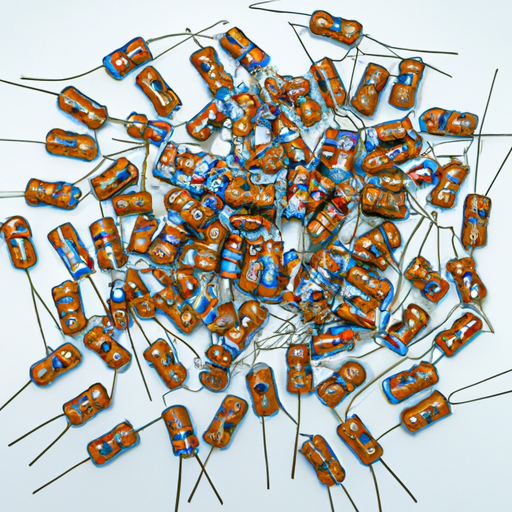
The market size of silicon capacitors is a crucial factor in understanding the growth and potential of this industry. Silicon capacitors are electronic components that store and release electrical energy in electronic circuits. They are widely used in various applications such as power supplies, signal processing, and filtering.The global market size of silicon capacitors is estimated to be around $1.5 billion in 2021 and is expected to reach $2.2 billion by 2026, growing at a CAGR of 7.8% during the forecast period. The increasing demand for electronic devices, the growing adoption of IoT technology, and the rising need for energy-efficient solutions are some of the key factors driving the growth of the silicon capacitor market.One of the major factors contributing to the growth of the silicon capacitor market is the increasing demand for electronic devices such as smartphones, tablets, laptops, and wearable devices. With the rapid advancements in technology, consumers are constantly looking for more powerful and energy-efficient devices. Silicon capacitors play a crucial role in ensuring the smooth functioning of these devices by providing stable power supply and filtering out noise and interference.Another key driver of the silicon capacitor market is the growing adoption of IoT technology across various industries. IoT devices rely on sensors and actuators to collect and transmit data, and silicon capacitors are essential components in these devices to ensure reliable performance and data accuracy. As more industries embrace IoT technology to improve efficiency and productivity, the demand for silicon capacitors is expected to increase significantly.Furthermore, the rising need for energy-efficient solutions is also fueling the growth of the silicon capacitor market. Silicon capacitors are known for their high energy density and low power consumption, making them ideal for applications where energy efficiency is a priority. With the increasing focus on sustainability and environmental conservation, the demand for energy-efficient electronic components such as silicon capacitors is expected to rise in the coming years.In terms of regional analysis, Asia-Pacific is expected to dominate the silicon capacitor market during the forecast period. The region is home to some of the largest electronics manufacturers in the world, such as Samsung, LG, and Huawei, driving the demand for silicon capacitors. Additionally, the rapid industrialization and urbanization in countries like China and India are further boosting the growth of the silicon capacitor market in the region.In conclusion, the market size of silicon capacitors is expected to witness significant growth in the coming years, driven by the increasing demand for electronic devices, the growing adoption of IoT technology, and the rising need for energy-efficient solutions. As the electronics industry continues to evolve and innovate, silicon capacitors will play a crucial role in enabling the development of advanced and efficient electronic devices.